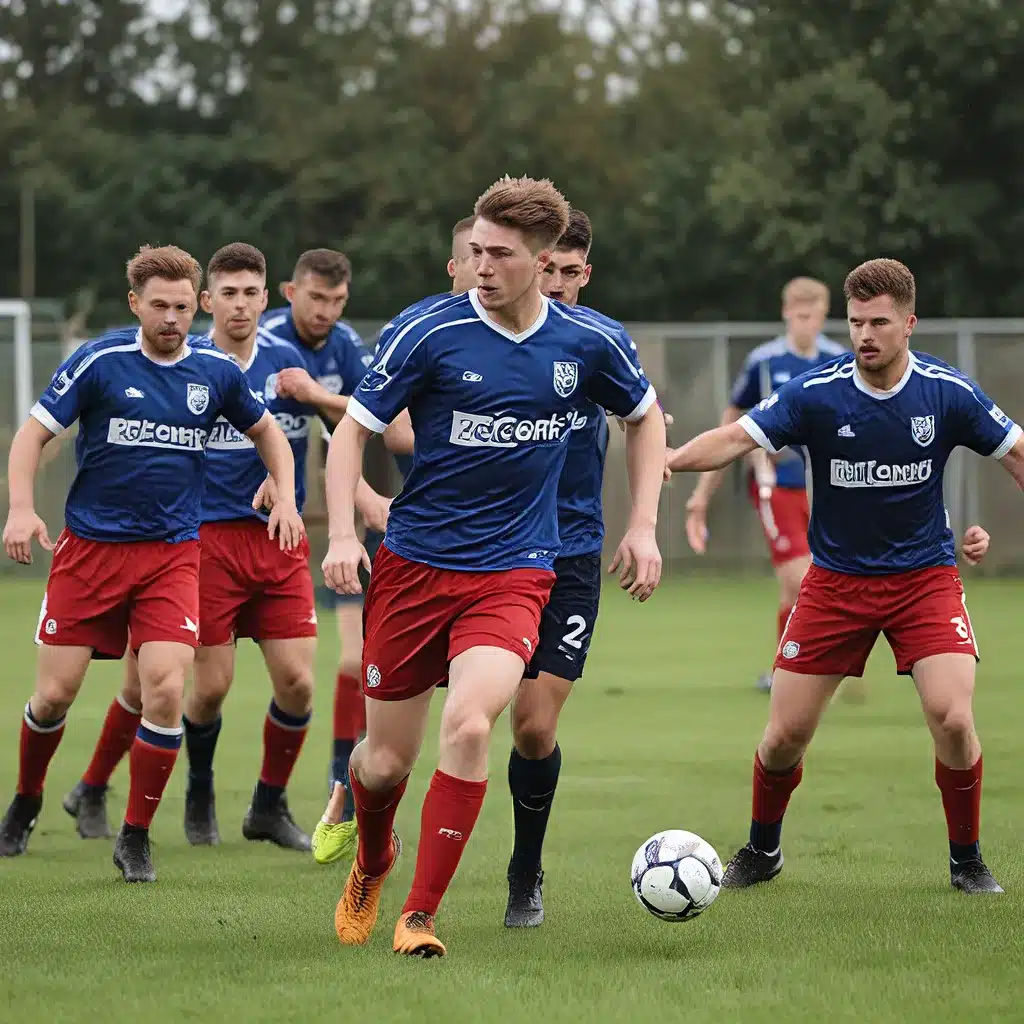
In the heart of the Garden of England, the Kent Football League has emerged as a hotbed of tactical innovation, where local clubs are pushing the boundaries of traditional playing styles. As the competition continues to grow in popularity and competitiveness, teams are embracing new approaches to the game, captivating fans and challenging the status quo.
Embracing Possession-Based Football
Gone are the days of the long-ball game and physical attrition. A growing number of Kent Football League clubs are embracing a possession-based style of play, prioritizing ball control, patient buildup, and dynamic movement. Teams like Ashford United and Faversham Town have been at the forefront of this tactical shift, with their midfielders and defenders dictating the tempo and probing for openings with intricate passing sequences.
“It’s been a conscious effort to move away from the traditional ‘hoof-and-hope’ approach,” explains Ashford United manager, John Smith. “We want our players to be comfortable on the ball, to read the game and make intelligent decisions. It’s not just about keeping possession for the sake of it; it’s about creating opportunities and breaking down the opposition through patient, controlled play.”
This tactical evolution has had a ripple effect across the league, as clubs strive to match the possession-based prowess of the frontrunners. Chatham Town and Sevenoaks Town have also embraced this approach, with their respective managers, Sarah Jones and David Williams, emphasizing the importance of technical proficiency and ball movement.
Embracing Defensive Solidity
While possession-based football has captured the imagination of Kent fans, some clubs have found success by prioritizing defensive organization and resilience. Hythe Town and Ramsgate FC have built their game plans around a solid defensive foundation, conceding fewer goals and frustrating opposing teams’ attacking ambitions.
“We’ve realized that in a competitive league like the Kent Football League, you can’t simply outscore your opponents,” says Hythe Town manager, Emily Watts. “Our focus has been on establishing a well-drilled, disciplined defensive unit that can withstand pressure and hit teams on the counter-attack. It may not be the most glamorous approach, but it’s been effective in securing points.”
The emphasis on defensive solidity has led to a shift in player recruitment, with clubs scouring the local talent pool for savvy, defensively-minded players who can organize the backline and provide a solid foundation for the team.
Embracing the Counter-Attacking Approach
While possession-based football and defensive resilience have gained traction, a select few Kent Football League clubs have embraced a more counter-attacking philosophy. Teams like Herne Bay and Margate FC have harnessed the pace and dynamism of their attacking players, allowing the opposition to control possession before striking with swift, clinical precision.
“We know that we may not dominate the ball for large spells, but we have the players who can hurt teams on the break,” explains Herne Bay manager, Jack Robinson. “Our focus is on organization, discipline, and seizing the moment when the opportunity presents itself. It’s a high-risk, high-reward strategy, but it’s one that has paid dividends for us.”
The success of these counter-attacking teams has forced their opponents to adapt, with some clubs adjusting their tactics to combat the threat of the quick transition. This tactical arms race has added an extra layer of excitement and intrigue to the Kent Football League, as teams strive to outmaneuver one another on the pitch.
The Impact on the Local Community
The tactical evolution within the Kent Football League has not only captivated the teams and their players but also had a profound impact on the local community. As clubs embrace new playing styles, they have found themselves at the heart of a renewed sense of pride and passion among supporters.
“When you see your local team playing an exciting, possession-based brand of football, it really captures the imagination of the community,” says avid Faversham Town fan, Emma Blackwood. “It’s not just about the results; it’s about the way the team plays, the sense of identity and unity that it fosters. It’s something we can all get behind and be proud of.”
The tactical evolution has also fostered grassroots development, with local youth academies and community programs embracing the same principles and playing styles as the senior teams. This ensures a continuity of the club’s identity and a pathway for young players to progress through the ranks.
“We want our young players to not only develop their technical skills but also understand the tactical nuances of the game,” says Sevenoaks Town youth academy director, David Burt. “By aligning our youth development with the first team’s playing philosophy, we’re creating a seamless transition and a clear vision for the future of the club.”
Conclusion: A League on the Rise
The tactical evolution within the Kent Football League is a testament to the dynamism and ambition of the clubs and their communities. As teams continue to push the boundaries of traditional playing styles, they are captivating local fans, inspiring the next generation of players, and elevating the profile of the league as a whole.
Whether it’s the intricate passing patterns of the possession-based teams, the resolute defensive structures of the organized clubs, or the thrilling counter-attacking displays, the Kent Football League is a microcosm of the tactical diversity and innovation taking place in the world of football. As the league continues to grow and evolve, one thing is certain: the future of Kent football has never been brighter.

